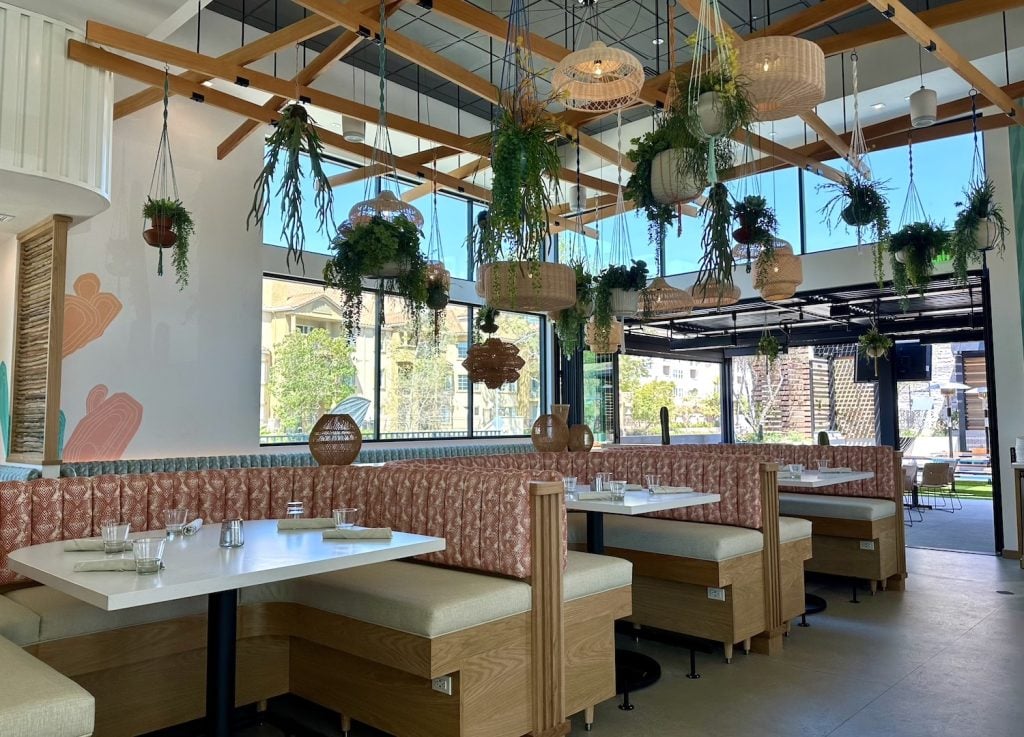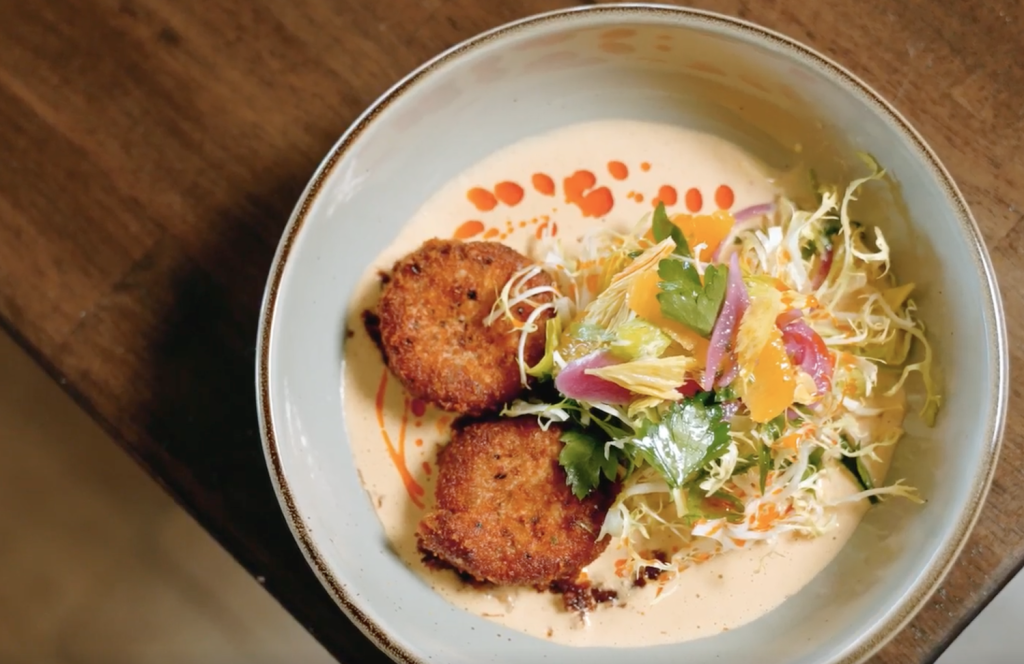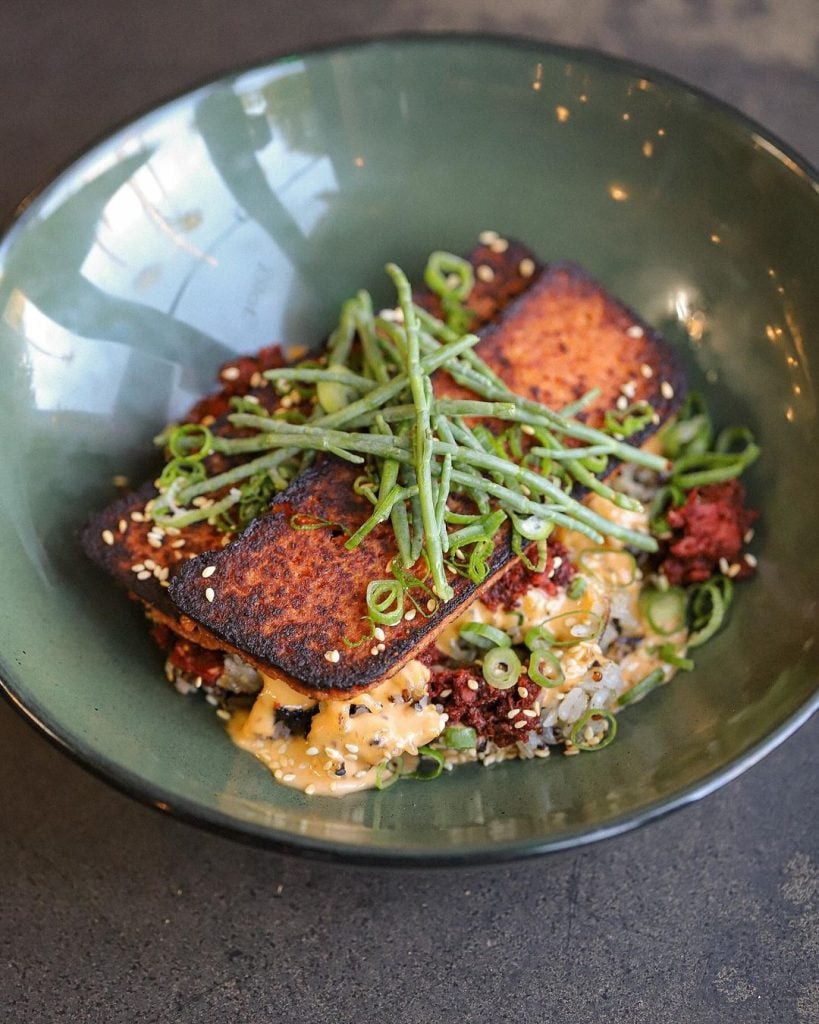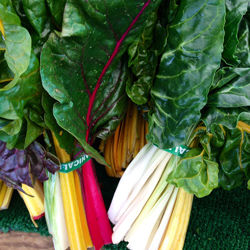How often are you stopped in your tracks by the sheer simple beauty of a produce display. Maybe it’s the kaleidoscope of colors. Maybe it’s the variety of textures. When I was at the Hillcrest Farmers Market last Sunday and glanced into the J.R. Organics stall I was lured in by something very simple: the almost pristine quality of the greens and beets. Unlike what you often find in supermarkets—wilted leaves with browned edges or raggedy root vegetables—these were almost saluting customers, compelling them to reach over and marvel at their freshness.
I’m often struck by the wonderful variety and quality produced by the farm, owned by Joe Rodriguez, Jr. and located in Escondido. And, fortunately, they’re easy to find in the region, with stalls at farmers markets in Escondido, Solana Beach, La Jolla, San Marcos, Little Italy, North Park, Pacific Beach, and, of course, Hillcrest.
Each of the items below are $3 a bunch and certified organic.
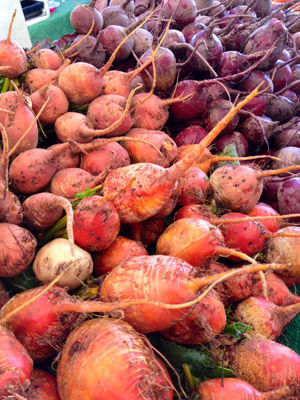
Beets
Golden Beets
Earthy and sweet, with a mouth-droppingly gorgeous color like sunshine or mangos, golden beets are the ultimate for beet fans. Sweeter than the stronger flavored reds, which the farm also raises and sells, the color is probably the bigger attraction, especially when sliced and dressed. But roasting brings out even more of their sweetness and if you want a hearty meatless meal, pair them with grains like barley or wheat berries, some kale, raisins, and feta. Toss with pasta, like farfalle, or create the prettiest borscht ever. And, don’t toss the beet greens. They’re splendid sautéed in olive oil with a little garlic.
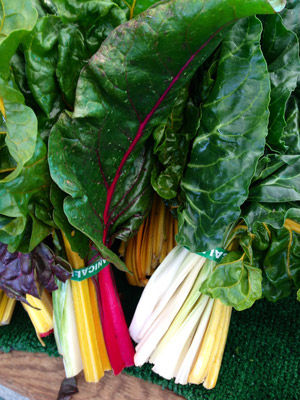
Rainbow Swiss Chard
Rainbow Swiss Chard
Rainbow Swiss Chard is a gift of nature. All those colors—yellow, white, orange, pink, red—attached to greens. In the middle of winter. Really, it’s insane. I love Swiss chard’s huge, hearty leaves that wilt in the heat of a sauté pan or into my mushroom barley soup. I enjoy sautéing them, mixing with ricotta, honey, red pepper flakes, toasted pine nuts, golden raisins, and lemon zest, then dropping teaspoons of the mixture into phyllo layers that are rolled and baked with a little parmesan on top. Add Swiss Chard to lasagna, to omelets and quiches, or substitute it for spinach in dips.
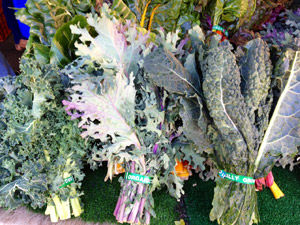
Curly, Red Russin, and Tuscan kale
Curly, Red Russian, and Tuscan Kale
If not chard, then kale. I’m drawn to its bitterness and the toughness that yields to heat and acid. The curly variety is a little more peppery and bitter than the other varieties. Red Russian tends to be on the sweet and mild side. Tuscan, also known as dinosaur or lacinato kale, is a deep dark green, and slightly sweet while still retaining some bitterness. It’s perfect tossed into pasta, cooked with beans, added to soup, or raw in a salad. In fact, one of my favorite ways to enjoy it is the True Food Kitchen’s Tuscan Kale Salad, which Chef Nathan Coulon showed me how to make. Just remove the center rib (save and add to soup), slice the leaves, then make a simple dressing of olive oil, lemon juice, mashed garlic, salt, pepper, and red pepper flakes. Add that to the kale with a little grated Parmesan cheese. Let it sit about five minutes so the acid cooks the kale and softens it. Then add more cheese and breadcrumbs. It’s totally irresistible. The Red Russian and Tuscan varieties are also fantastic as chips because the leaves are relatively flat. Just wash and dry the leaves, toss with olive oil and sea salt, and bake slowly at 275 degrees for about 20 minutes. In the last few minutes top with grated Parmesan cheese. You can do this with whole leaves or cut into small pieces.
